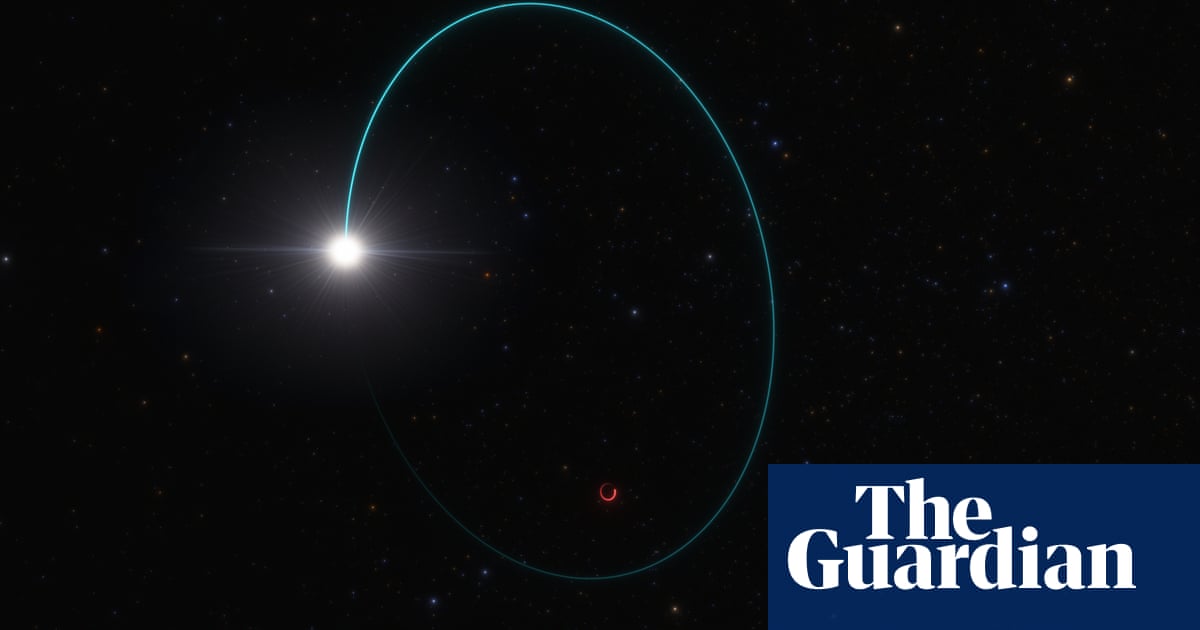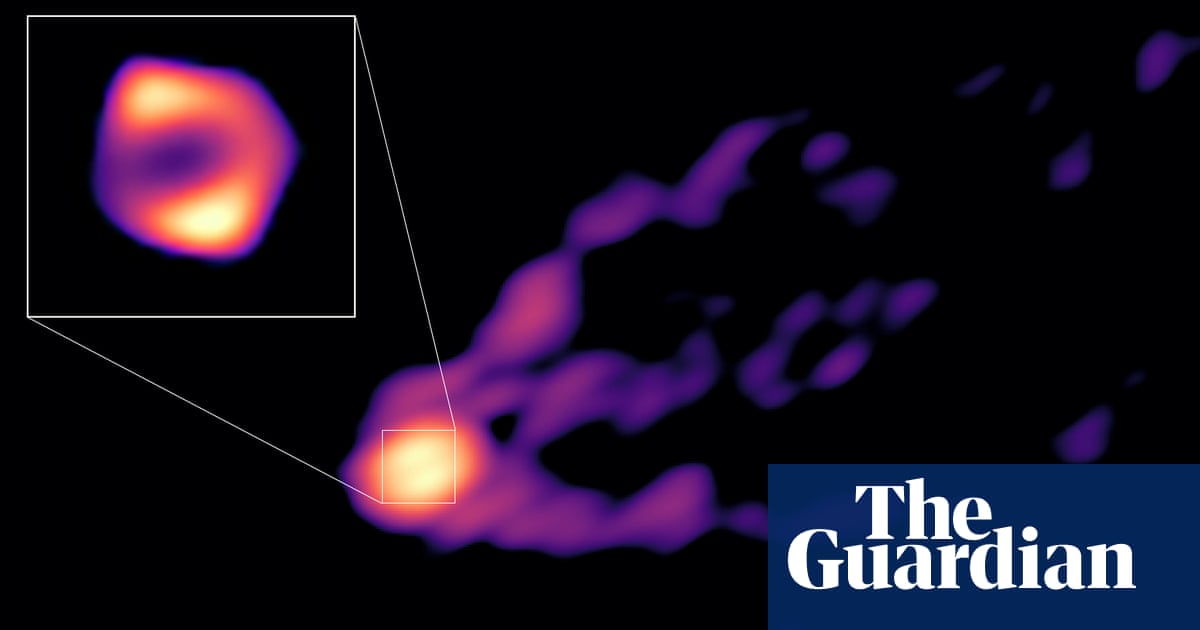
Astronomers have discovered an enormous black hole which formed in the aftermath of an exploding star a mere 2,000 light years from Earth.
BH3 is the most massive stellar black hole yet found in the Milky Way and revealed itself to researchers through the powerful tug it exerts on a companion star that orbits the object in the constellation of Aquila, the Eagle.
The serendipitous discovery is so important that scientists released details of the object earlier than planned to enable other astronomers to perform further observations as soon as possible.
“It’s a complete surprise,” said Dr Pasquale Panuzzo, an astronomer and member of the Gaia collaboration at the Observatoire de Paris. “It is the most massive stellar origin black hole in our galaxy and the second nearest discovered so far.”
Stellar black holes form when massive stars collapse at the end of their life. Dozens have been found in the Milky Way, most weighing in at around 10 times the mass of the sun.
The most impressive black hole in the Milky Way, Sagittarius A, has the combined mass of several million suns. It lurks at the heart of the galaxy and formed not from an exploding star but the collapse of vast clouds of dust and gas.
Researchers spotted BH3 in the latest trove of data gathered by the European Space Agency’s Gaia mission. The space telescope launched in 2013 with the aim of compiling a 3D map of a billion stars.
As researchers were reviewing the Gaia observations, they noticed a distinct wobble in one of the stars in Aquila, a constellation that is visible in the summer sky in the northern hemisphere. The movement suggested the star was being pulled around by a black hole 33 times more massive than the sun.
Further observations from the European Southern Observatory’s Very Large Telescope in Chile’s Atacama desert confirmed BH3’s mass and the star’s orbit, which circles the black hole once every 11.6 years. “Only the central black hole in the Milky Way is more massive than this one,” Panuzzo said.
While BH3 is more massive than other stellar black holes in the Milky Way, it is similar to some of those revealed by gravitational waves, or ripples in spacetime, which are generated when black holes collide in distant galaxies.
“We have only seen black holes of this mass with gravitational waves in faraway galaxies,” said Panuzzo. “This makes the link between the stellar black holes we see in our galaxy and those gravitational wave discoveries.” Details are published in Astronomy and Astrophysics.
There may be 100m stellar black holes in the Milky Way, but despite their vast mass and the powerful forces they generate, they can be extremely difficult to spot. “Most of them don’t have a star orbiting around them, so they are almost invisible to us,” said Panuzzo.
Measurements of BH3’s companion star found no sign that it was contaminated with material blasted out from the stellar explosion that formed the black hole. The finding suggests the black hole formed long before it trapped the companion star in its powerful gravitational field.
The next tranche of Gaia data is due for release in late 2025 at the earliest, but the importance of the discovery led the international team to release details of BH3 early so astronomers can study it immediately.
“As soon as this comes out people will rush to observe it to see if there are any emissions from the black hole,” Panuzzo said. “That will tell us about the wind that comes from stars like the one orbiting the black hole, and also about the physics of the black hole and how matter falls into it.”
The headline was amended on 16 April 2024 to clarify that BH3 is thought to be 33 times the mass, rather than size, of the sun.












